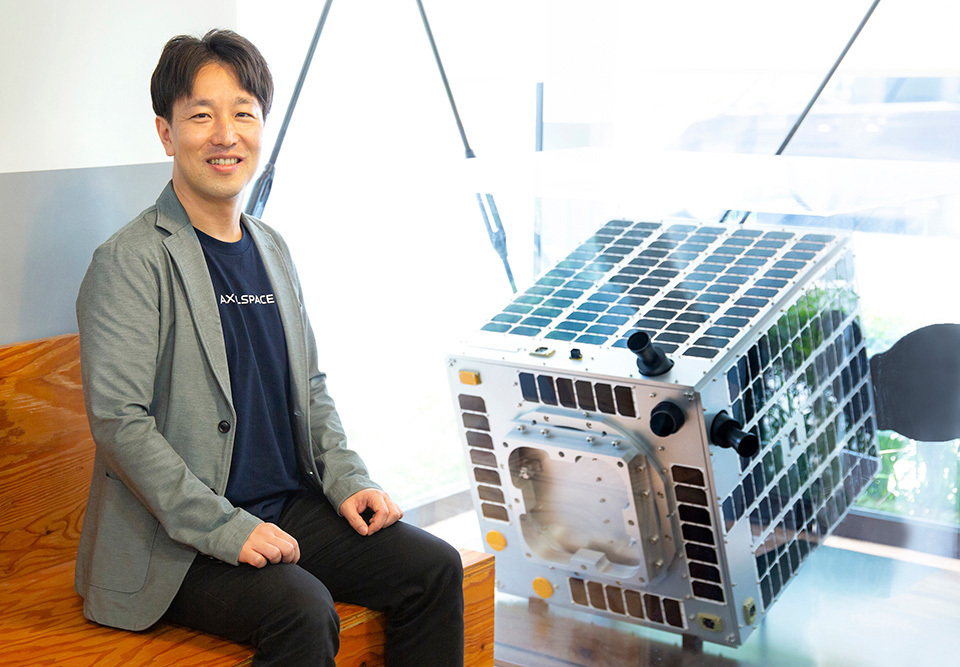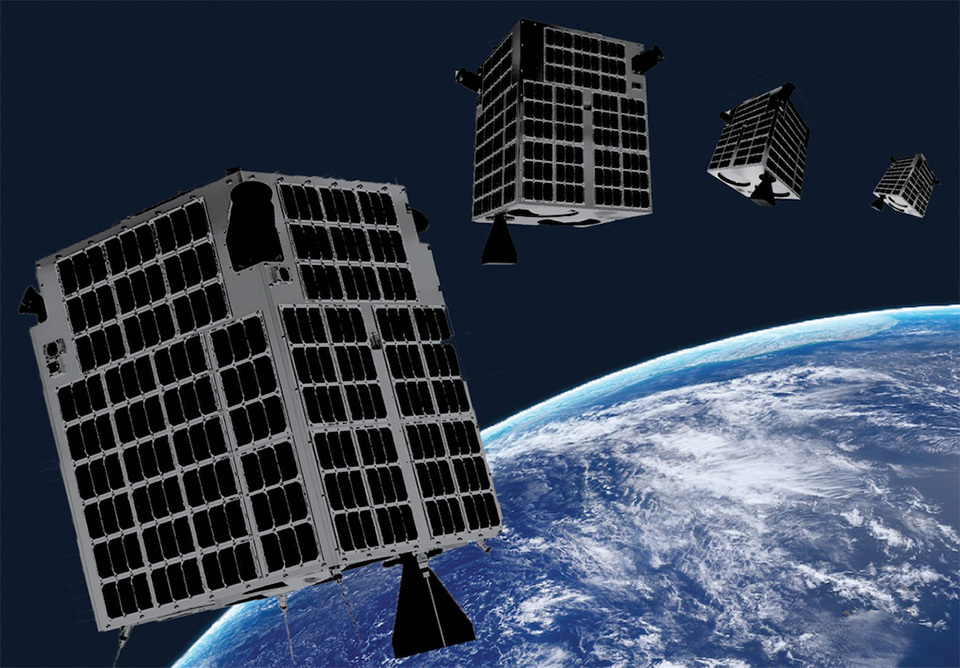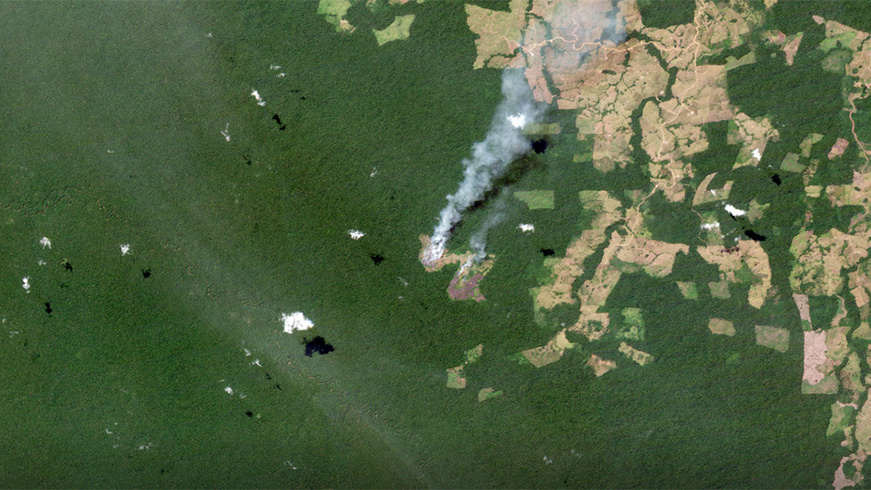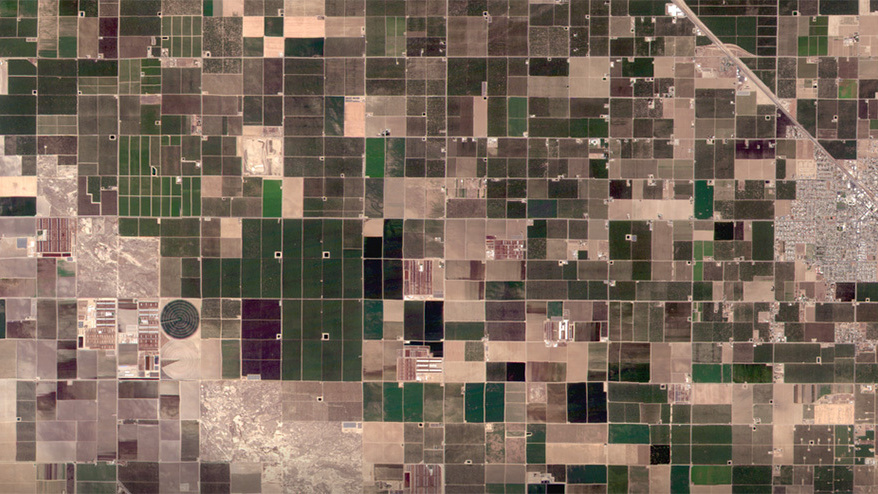With worldwide efforts accelerating to utilize space, a Japanese startup, Axelspace, has developed microsatellites that can be mass-produced to reap new benefits from space. The company offers an exciting vision for the future of the space industry.

“Our objective is to offer packaged solutions for the process required for design, manufacturing, and operation in orbit. That is the essence of the digital transformation of space development,” says Axelspace CEO NAKAMURA Yuya. “By making microsatellites as versatile as possible and achieving a scalable production system, we want to add new value to space.” The microsatellite in the picture is a full-scale model of GRUS, which is used by AxelGlobe.
“In the not-too-distant future, space will establish itself as part of our social infrastructure,” says NAKAMURA Yuya, co-founder, president and CEO of Axelspace, a startup that provides innovative solutions through the use of microsatellites. The company’s vision is “Space Within Your Reach.” He continues, “The current position of the space industry is similar to that of the IT industry a few decades ago. It is expanding from governmental use to the private sector, with startups rapidly developing new services. Space is no longer a ‘special place’ but is increasingly a ‘place within our reach.’”
Nakamura was an engineering student at the University of Tokyo when he participated in a project to develop a CubeSat, a tiny satellite measuring 10 x 10 x 10 cm, which was successfully launched and operated in 2003—the first time ever in the world for such a small satellite. When he shared the images taken by the CubeSat with the world, the reaction was beyond his expectations, and he came to realize the potential of the space business, which he knew would have an immense impact on society. This experience led him to start his own business in 2008.

Axelspace has developed an Earth-observation platform that utilizes a constellation composed of multiple microsatellites called GRUS. The platform is useful in many processes, such as predicting agricultural yields and assessing damage in disaster areas. Clients include banks looking to consider harvest predictions before providing loans. Above is an illustration of GRUS, of which five are currently in operation in orbit. AXELSPACE
Axelspace offers two major business solutions. The first is AxelGlobe, an Earth-observation platform that shares satellite imagery of the planet obtained by GRUS—a next-generation remote-sensing microsatellite developed by the company—with which it provides data-analysis solutions. AxelGlobe has devised an integrated constellation of five GRUS satellites in which multiple satellites are linked and work in tandem as a single system to provide the company with frequent images of any point on the globe—with great ease and at low cost—to meet the various needs of its clients. Unlike full-size satellites that weigh up to a few tons, 100-kg-class microsatellites, such as GRUS, cannot convey the huge telescopes necessary to capture high resolution images. Instead, a constellation of smaller lower-cost satellites makes higher-frequency Earth monitoring possible, creating novel value that cannot be achieved by a single large satellite.
In the United States and elsewhere, for example, photographing large tracts of farmland requires multiple drones and much time, but one image taken from space can achieve the same result. “Microsatellites enable us to provide data offering new value to space itself,” asserts Nakamura. “In agriculture, precision farming becomes possible by accessing daily crop health data, allowing areas where growth is slow to be assessed and fertilized accordingly. In some cases, banks have utilized our service because it enables them to predict crop yields before authorizing loans.”


Establishing a constellation of small Earth-observation satellites can increase imaging frequency. Also, the medium-resolution GRUS, with an imaging range of 57 km, can capture a broad area at one time. The images above are of a jungle fire in Columbia (left), and a part of the U.S., showing plants’ distribution area and growing condition (right). AXELSPACE
Establishing a constellation of small Earth-observation satellites can increase imaging frequency. Also, the medium-resolution GRUS, with an imaging range of 57 km, can capture a broad area at one time. The images above are of a jungle fire in Columbia (top), and a part of the U.S., showing plants’ distribution area and growing condition (bottom). AXELSPACE
Meanwhile, Axelspace’s other business, AxelLiner—announced in 2022—is a service that provides the complex procedures necessary for a satellite project all in one package. It is a unique one-stop service that encompasses all the segments of a space business, from design to production and operation. By developing mass-produced, highly versatile satellite buses, which are core bodies of satellites that are equipped with basic functions, Axelspace intends to provide its service in a more affordable and faster package, thus lowering the hurdles that prospective satellite users may face. In early 2024, AxelLiner plans to launch Pyxis, its first demonstration satellite.
Axelspace has also invested in further efforts to develop next-generation technology and participates in the “development and demonstration of inter-satellite optical communication network system” program sponsored by Japan’s New Energy and Industrial Technology Development Organization (NEDO). If the optical communication network is set up between multiple satellites, not only will they facilitate a large-volume and low-delay data relay between space and the ground but the network can also be utilized as a backup communication system in times of severe disasters. By 2029, the company, together with its partners, plans to demonstrate the functionality and performance of the satellite optical communication network in the vicinity of Japan.
The motivation behind Nakamura’s pursuits is his passion for building microsatellites that are useful to society and for turning space into a common place with Earth observation and communication infrastructure usable by anyone and everyone. “I think that space should play a supporting role in that scenario. The way to create fresh solutions is by switching the focus from space to the people who use it,” he says. Nakamura will keep his foot on the accelerator until space is truly “within our reach.”






























